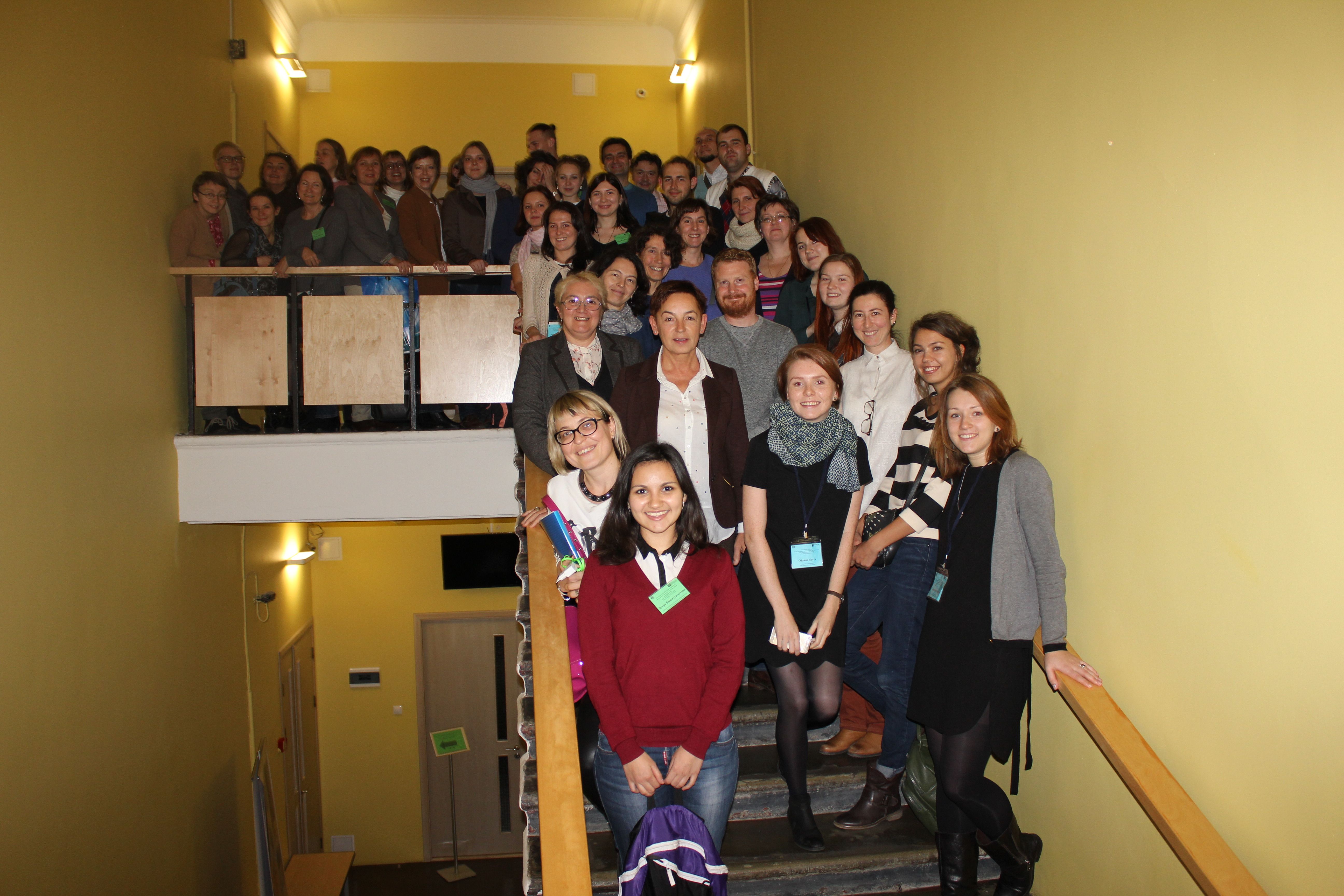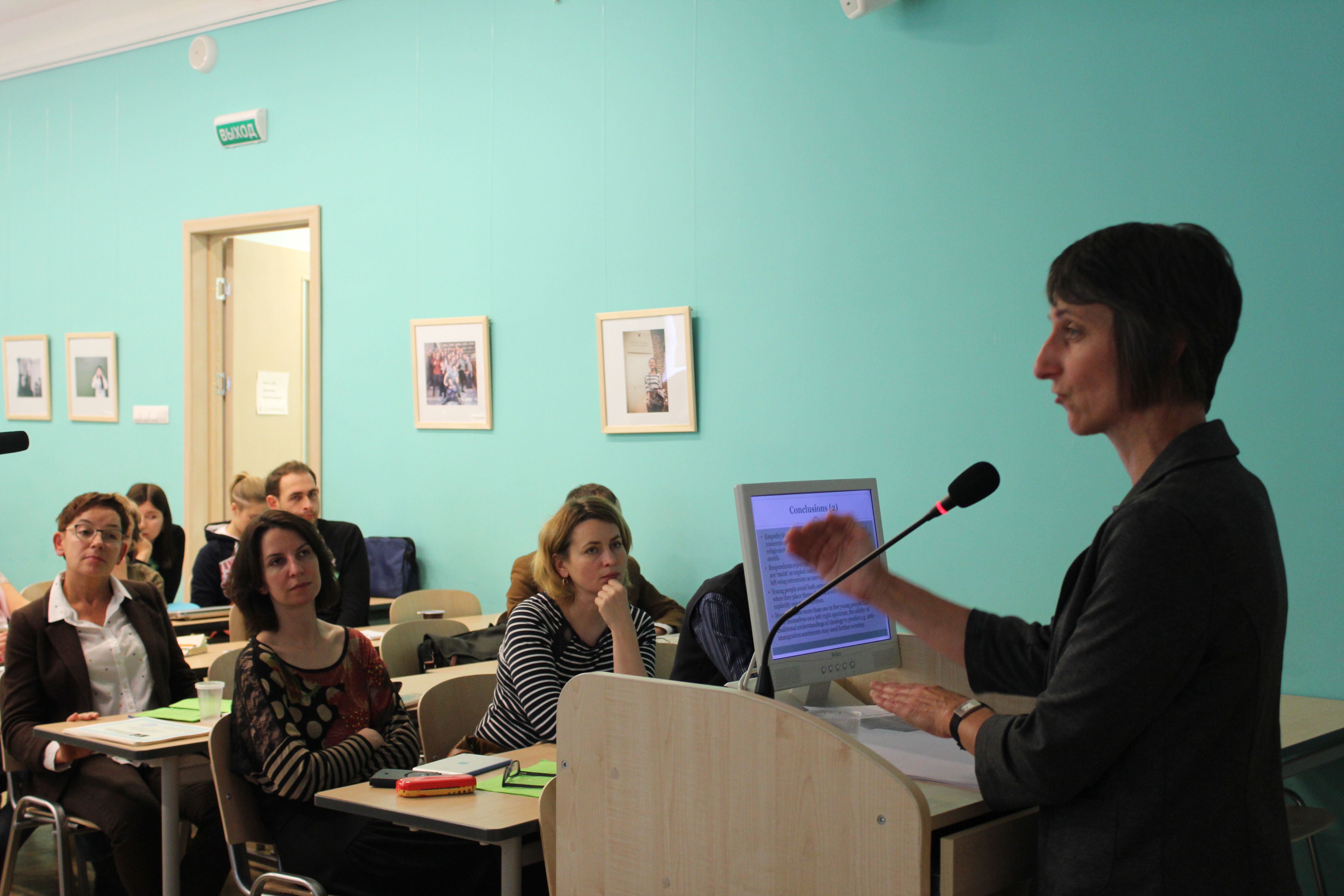Youth subcultures: what are they now?
From 30 November to 1 December 2017, the international conference "Urban youth cultures: solidarity, creativity, activism" will take place as part of the project "Creative Fields of Interethnic Cooperation and Youth Cultural Scenes of Russian Cities" (Russian Science Foundation, 2015-2017), implemented by the Center for Youth Studies (CYS) at the Higher School of Economics in St. Petersburg. The research of the CYS always produces interesting results, so we turned to the director of the Center Professor Elena Omelchenko to find out more about the upcoming event.

The international conference "Urban youth cultures: solidarity, creativity, activism" will be the third international event organized by the CYS. In 2013, a three-day youth festival of science and arts "BRAIN: youth, education, knowledge, city" took place, and in 2015 - an international conference "Youth and society: in search of new solidarity" was held.

What are the most vivid youth subcultural practices and communities that can be distinguished in contemporary Russia?
This conference stands out as it will focus on the new types of urban communities and formations, interactions and communication between young people both in Russian cities as well as in the global dimension. It is difficult to outline the exact types of youth groups which have appeared in modern Russia. We can mention several key trends that seem most interesting to us in today's youth space. First to note are some extinguishing types of subcultural activities in their classical sense. Yet, it is not that these subcultures are disappearing. Rather, it is about the fact that some core values around which subcultural solidarity has previously formed that are increasingly becoming more mobile and "soft". These values can now be perceived by wider audiences, i.e. subcultures lose their element of secrecy, traditionally inherent to them. At the same time, within the subcultural scene itself, there is constant fragmentation, division into new sub-types, and new more specific formations that, while maintaining the most significant value, also develop an additional special quality that distinguishes them and makes them recognizable among other subcultures.

Could you explain what does “extinguishing types of subcultural activities in their classical sense“ mean?
For example, in the case of the Goths, we can see that they, as a subculture itself, are actually disappearing. This conclusion we made based on data collected through a survey of students who recognized themselves as a part of a separate subculture in St. Petersburg (the survey was conducted in St. Petersburg, Ulyanovsk, Kazan, Makhachkala). Also, a very small percentage of young people said they were familiar with who “the goths” were, and only a few admitted that they were a part of this subculture. However, the very idea of promoting the cult of dark forces or something incomprehensible, mysterious and otherworldly is perceived by a variety of smaller groups and communities and these ideas continue to collect "followers" mostly in the music scene.
.jpg)
So we can say that subcultures are increasingly less and less secretive and closed off?
When it comes to classical subcultures, we can see that they were formed based on several core ideas. For example, in the case of the hippies, such ideas were unisex, rejection of violence, pacifism, anti-capitalist values, cult of movement and travel, light drugs, search for a different reality, refusal to follow the conventional path for a successful career, cult of nature and everything natural, renunciation of militarism, war, etc. If, for example, we look at the " Dandyism" or "The Teddy Boy" subculture, we talk about a cult of style and particular type of expression, this is a youth community that has a higher status due to a rather different, specific style that brings them (at least symbolically) closer to the “high society”. If we look at the skinheads, then ideas of the worker, of the male fraternity, of rigid heterosexual masculinity, strength, aggression, and the protection of local values and male solidarity prevail. Speaking of the punks, core values involve the symbolic challenge to consumerism as well as disregard of money and wealth. Instead, this group focuses on developing the economy of Do-It-Yourself, veganism, vegetarianism and so on. All these and other key ideas begin to be understood more and more broadly, and start to be modified depending on that local specificities that play out in a more diverse subcultural youth space.

What other tendencies have you noticed?
The second trend in the youth space which I would like to emphasise on is the development of sports that redefine the city in terms of convenience and suitability of a particular place (or places) for the practice of sports. Here we see sport as "natural" or "commercialized" (fitness). Under the former heading fall sporting practices such as parkour, trekking, workout – or activities where young people reject any commercial elements (e.g paid gyms, coaches, etc.), and focus on more natural forms. Related to these practices, we also see different types of careers that are not motivated by financial or commercial gain.
The third popular trend is the emphasis on health promotion, which, by the way, largely overlaps with the previous trend. And here it is necessary to mention practices involving asceticism in terms of consumption, which manifests itself not only in the refusal of alcohol, smoking and drugs, but also in the practice of veganism and vegetarianism, etc. Similar activity can also take place in the online space, with communities on VK as well as Instagram pages with photographs and tips on how to maintain a healthy lifestyle, often boasting hundreds of thousands of followers.
The fourth recent trend is related to activism, which over the past five years has gained prominence in the youth space. Young people get increasingly involved in formally or informally organized structures and movements such as student organizations or NGOs. More and more often, we see various informal initiatives that refuse to be commercially-driven, and act solely on their own. And here too, there is a tendency for civil activism and participation in a type of activity that has impact on the city.
All these trends characterize the youth as a very heterogeneous social group, and this diversity helps to see and understand new types of youth involvement.

And how can problems related to such change be solved?
At the methodological level, we solve this issue using different techniques. We try to not only look at the general picture, but also understand the different meanings and interpretations of young people about certain political or cultural practices, paying special attention to the peculiarities of youth rhetoric in order to avoid any judgments that can be manifested in the questions we ask or during the interviews we hold. We try to cover youth everyday life as fully and accurately as possible, we listen to the young people and enter into an equal conversation with them. In this way, young people are understood as an active, reflective subject, rather than merely an object of political manipulation.
Finally, equally important is the rhetoric of academic writing. An essential element is the way we present the results of our research: presentations, articles, books. We are striving for a broad and frank viewpoint, in order to prevent distorting our assessment under the influence of what we personally heard in the interview or saw during the observation process. If we manage to portray the variety but also find common features and trends, this would mean that our methodology has been implemented successfully.

Could you tell us a bit more about Prof. Hilary Pilkington as a researcher. Why did you consider it important to invite her?
Professor Hilary Pilkington works at Manchester University, she is a sociologist. We have been working together for over 20 years and have participated and implemented a lot of joint research projects. During our work, the main concept and strategy of our youth research developed. It's hard to say whose contribution was greater. It was more like a joint project in which we all learned a lot from each other. We consider Prof. Pilkington as the formal as well as informal academic head of the School of Youth Research. In addition, together with her we wrote a number of books such as "Looking West?: Cultural Globalization and Russian Youth Cultures" and "Russia's Skinheads: exploring and rethinking subcultural lives" as well as various joint articles and organized many academic events. Hilary is a very honest and widely known sociologist with well-deserved established reputation in Britain and Europe. At the same time, she is an incredibly efficient leader. Under her supervision, a third international project is already being implemented, which involves participants from more than 15 European countries. These are global and very ambitious projects. Receiving grants for such large endeavours speaks a lot about her reputation.
The first such project (MyPlace) was dedicated to the historical memory and the youth's attitude to history in countries that have gone through war and totalitarian regime. The second (HORIZONT 2020) was a project about the inclusion of young people in society, and new forms of youth participation and exclusion. Our third joint endeavour which we just launched is devoted to the radicalization of youth activism, associated primarily with religion. Prof. Pilkington is a very strong researcher. By the way, the book she wrote "Loud and Proud: Passion and Politics in the English Defense League (New Ethnographies)" was recently recognized as the best book of 2016 by The British Sociological Association. Hilary is not only a strong sociologist, but also a good friend of the Center for Youth Studies, so it is extremely important and honorable for us that she will kickstart this conference.

What is the purpose of this conference?
Our conference will examine the diversity of youth cultural activity as a space for learning, growing up, experimenting, protesting, expressing creativity and communication.
To this end, we would like to invite empirical scientists from different disciplines and countries to discuss contemporary youth cultural contexts and the new approaches to youth research.
And how can one become a participant of the conference?
To participate in the conference, you need to send an abstract of no more than 350 words, together with a cover letter, indicating your place of work and position, e-mail address as well as a phone number. Abstracts can be in Russian or English and must be sent before 28 May, 2017 to youth.hse.spb@gmail.com. The results of the selection will be announced on 11 June, 2017.
We are looking forward to your applications!
